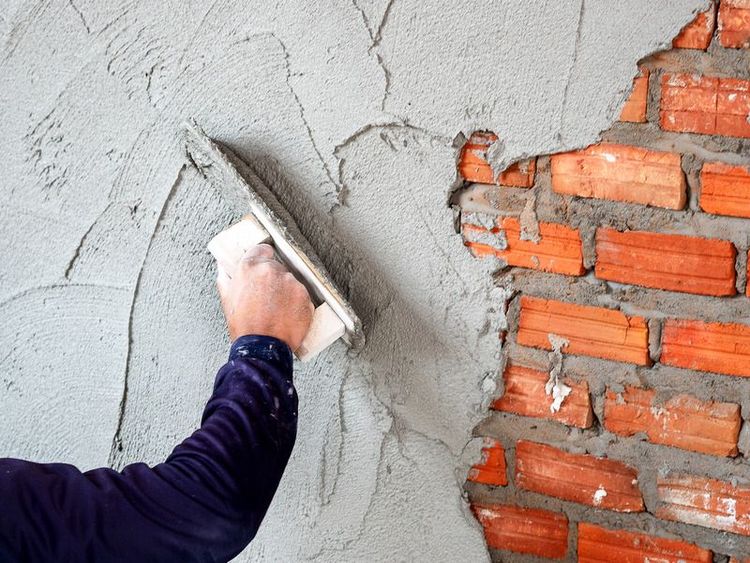Ever painted a room and then—ugh—noticed little cracks or patches popping up after just a few months? That frustrating, uneven look usually has nothing to do with the paint. The real culprit? Bad plastering. And at the center of that problem is one thing most people don’t think about enough: the cement.
Getting a smooth, clean wall starts way before the paintbrush ever comes out. It starts with choosing the best cement for plaster—something that’s reliable, easy to work with, and built to last.
This guide breaks it all down in simple terms—no technical jargon, no confusion. Just real, useful info to help you get those clean, flawless walls you’ve been dreaming of.
What Kind of Cement Should I Use for Plastering?
If you’re standing in the cement aisle feeling lost—don’t worry, you’re not alone.
Here’s the deal: for most plastering jobs, especially at home, Ordinary Portland Cement (OPC) in grade 33 or 43 is a solid bet.
What you’re looking for is:
- A smooth texture (no lumps or gritty bits)
- Good bonding strength to help prevent cracks
- Cement that sets at just the right pace—not too fast, not too slow
- A nice, even finish once applied
Basically, the best cement for plaster will help your walls look great and stay strong—even if your home sees a bit of wear and tear.
How Can I Tell If I’m Buying the Right Cement?
There’s a simple rule here: don’t go cheap, go smart.
A few things to check:
- Check the date: Cement has a shelf life. Try to use it within 2–3 months of manufacturing.
- Feel it: Good cement should feel soft and powdery—never hard or clumpy.
- Stick with trusted brands: Top cement manufacturers invest in quality and consistency.
- Read the label: Look for ISI certification or any quality marks. That means it’s been tested.
Also—this one’s important—don’t use half-open bags lying around for months. Moisture is a cement killer.
Is One Type of Cement Okay for Every Wall?
Short answer? Not really.
Different parts of your home need different kinds of cement products.
- Indoor walls? Use OPC 33 or 43 grade. It gives you that smooth, even look.
- Outdoor walls? You’ll need something tougher like PPC (Portland Pozzolana Cement), which can handle rain, heat, and weather changes.
- Bathrooms or kitchens? Go for cement that offers extra moisture resistance or can be mixed with waterproofing solutions.
So yes, if you really want that professional finish—it’s worth picking the right product for the job.
Why Does the Brand of Cement Matter So Much?
Here’s a little truth people don’t always talk about: cheap cement often leads to expensive repairs later.
When you go with a trusted brand—established cement manufacturers who know what they’re doing—you’re getting:
- Better, more consistent texture
- Cement that mixes and sets just right
- Stronger plaster that resists cracks and moisture
- Help and guidance if you’re not sure how to use it
In other words, you’re buying peace of mind.
What Can Go Wrong if I Use the Wrong Cement (Or Apply It Wrong)?
Even the best cement for plaster won’t save a job done poorly.
Here are the most common mistakes people make:
- Using too much water when mixing – makes plaster weak
- Skipping wall prep – dusty or damp walls ruin bonding
- Wrong ratio of cement to sand – affects strength and texture
- No curing after application – leads to early cracks
- Plastering in extreme heat or rain – causes uneven setting
The fix? Follow the instructions, don’t rush the process, and—if in doubt—get a professional involved.
Does Good Cement Really Make That Much of a Difference in the Final Look?
Yes. A thousand times yes.
Using the best cement for plaster gives you:
- Walls that are silky smooth to the touch
- Less cracking over time
- A surface that holds paint beautifully
- Better moisture resistance in humid areas
- A professional-grade finish—without the stress
Trust me, once you’ve painted over a well-plastered wall, you’ll feel the difference every time you walk into the room.
Final Thoughts:
You don’t have to be a builder or engineer to make smart decisions about your home. Choosing the right cement for plastering is one of those small choices that makes a big difference.
Here’s what to remember:
Choose the right type—OPC for indoors, PPC for outdoors
Buy fresh, quality cement products from reliable cement manufacturers
Follow proper mixing and curing methods
Don’t cut corners—your walls deserve better


